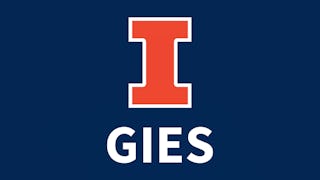This course analyzes the tax treatment, issues, planning techniques and underlying government policies involved in doing business internationally. The course incorporates concepts learned in all of the tax courses as they relate to the impact on cross-border outbound transactions (i.e., the taxation of US taxpayers doing business abroad). Topics include the source of income, transfer pricing, controlled foreign corporations (CFCs), Subpart F income, foreign tax credits, Global Intangible Low-Taxed Income (GILTI), Base Erosion and Anti-Abuse Tax (BEAT), and Foreign Derived Intangible Income (FDII). While this course focuses heavily on outbound transactions, some inbound rules (i.e., non-US taxpayers doing business in the United States) will be discussed. This course is an introductory course, so no prior knowledge of international taxation is required or expected. However, prior knowledge of U.S. federal taxation is necessary.



U.S. Taxation of International Transactions

Instructor: Matthew Hutchens
7,286 already enrolled
Included with
(60 reviews)
What you'll learn
Explain how countries attempt to mitigate the impact of double taxation.
Apply the sourcing rules for various types of income.
Analyze incentives/disincentives for generating certain types of foreign income.
Calculate the Foreign Tax Credit available to offset U.S. tax on foreign income.
Skills you'll gain
Details to know

Add to your LinkedIn profile
29 assignments
See how employees at top companies are mastering in-demand skills

There are 4 modules in this course
In this module, you will first become familiar with the course, your instructor and your classmates, and our learning environment. This orientation will also help you obtain the technical skills required to navigate and be successful in this course. Next, we will begin our discussion of U.S. international taxation by discussing the baseline theories used to prevent international double taxation and the different jurisdictional bases for imposing taxation on international transactions. We will then discuss specific tests to determine when a taxpayer is a U.S. resident vs. non-resident. We will discuss system of worldwide taxation generally employed by the United States and major exceptions to that system. And, we will conclude with a discussion of how income is "sourced" to either the United States or a foreign jurisdiction using the sourcing rules of the United States.
What's included
12 videos12 readings8 assignments1 discussion prompt1 plugin
In this module we will start with a basic introduction to inbound taxation issues, including a discussion of the Fixed, Determinable, Annual, and Periodical (FDAP) Income and Effectively Connected Income (ECI) taxing regimes. We'll then discuss the branch profits tax, which supports the ECI taxing regime. Next, we'll turn to understanding how tax treaties impact existing international taxation rules. Then, we'll cover transfer pricing issues, including a discussion of the new Base Erosion and Anti-Abuse Tax (BEAT). We'll conclude with a discussion of export incentives available to U.S. taxpayers selling abroad.
What's included
7 videos3 readings8 assignments
In this module we will be introduced to the Subpart F and Global Intangible Low Taxed Income (GILTI) regimes. These taxing regimes will cause certain foreign income earned by U.S. Shareholders through Controlled Foreign Corporations (CFCs) to be currently taxable in the United States. Specifically in this module we will learn to identify when a U.S. person is a U.S. Shareholder and when a foreign corporation is a CFC. We will also learn about what types of income constitute Subpart F. And, how GILTI is computed. We will conclude with a discussion of the Passive Foreign Investment Company (PFIC) rules which cover U.S. persons investing in foreign corporations that are not CFCs.
What's included
6 videos1 reading7 assignments
In this module we will learn about how the Foreign Tax Credit mitigates the possibility of international double taxation. We will learn which foreign taxes are creditable for the purposes of this tax. We will then turn to computing the Foreign Tax Credit Limitation, which ensures that foreign taxes paid or accrued are only used to offset U.S taxes on foreign income and not U.S. taxes on U.S.-sourced income. We will then discuss how the Foreign Tax Credit interacts with provisions we have already discussed (e.g., GILTI). We will conclude with a brief discussion of the Check-the-Box Rules and how they impact international tax planning.
What's included
6 videos3 readings6 assignments1 discussion prompt1 plugin
Build toward a degree
This course is part of the following degree program(s) offered by University of Illinois Urbana-Champaign. If you are admitted and enroll, your completed coursework may count toward your degree learning and your progress can transfer with you.¹
Instructor

Offered by
Explore more from Business Essentials
 Status: Free Trial
Status: Free TrialUniversity of Colorado Boulder
 Status: Free Trial
Status: Free TrialUniversity of Illinois Urbana-Champaign
 Status: Free Trial
Status: Free TrialUniversity of Illinois Urbana-Champaign
Why people choose Coursera for their career




Learner reviews
60 reviews
- 5 stars
81.66%
- 4 stars
16.66%
- 3 stars
1.66%
- 2 stars
0%
- 1 star
0%
Showing 3 of 60
Reviewed on Sep 4, 2023
Really awesome course. The content was great and teaching methodology of Mr. Huttchens is really commendable

Open new doors with Coursera Plus
Unlimited access to 10,000+ world-class courses, hands-on projects, and job-ready certificate programs - all included in your subscription
Advance your career with an online degree
Earn a degree from world-class universities - 100% online
Join over 3,400 global companies that choose Coursera for Business
Upskill your employees to excel in the digital economy
Frequently asked questions
Once you enroll for a Certificate, you’ll have access to all videos, quizzes, and programming assignments (if applicable). If you choose to explore the course without purchasing, you may not be able to access certain assignments.
You will be eligible for a full refund until 2 weeks after your payment date. You cannot receive a refund once you’ve earned a Course Certificate, even if you complete the course within the 2-week refund period.
Yes! Coursera provides financial aid to learners who would like to complete a course but cannot afford the course fee. To apply for aid, select "Learn more and apply" in the Financial Aid section below the "Enroll" button. You'll be prompted to complete a simple application; no other paperwork is required.
More questions
Financial aid available,


